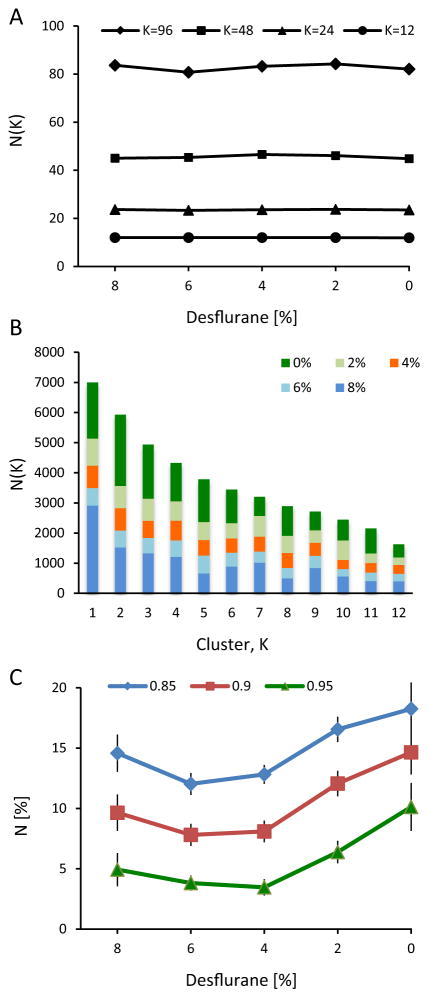Fig. 9.
Results from CAP clustering as a function of state. (A) Number of CAP types (N(K)) present in each anesthetic condition at different cluster numbers K. K-means clustering was done on concatenated data and then the CAP types were counted in each condition. Virtually all cluster types occur in all states. (B) Number of CAPs N(K) in 12 clusters K. Anesthetic concentration is indicated in the legend. Data were combined from all animals, after ordering the 12 clusters according to the number of CAPs contained. Certain clusters contain disproportionally more CAPs at 8% and 0% desflurane than the rest. (C) Number of CAP centers that spatially cluster together at three smoothness thresholds. Clustering tendency is the highest in wakefulness but not different among the other states, particularly near the transition between unconsciousness (6%) and consciousness (4%).

